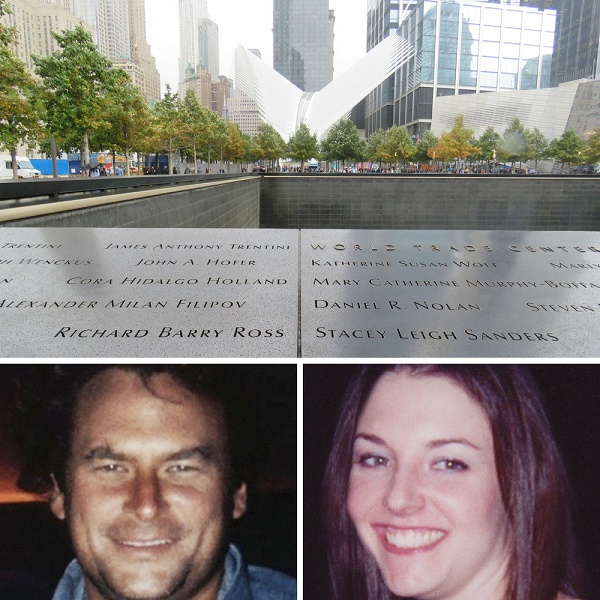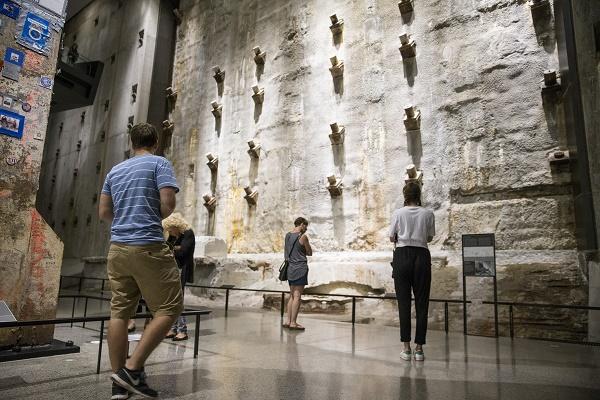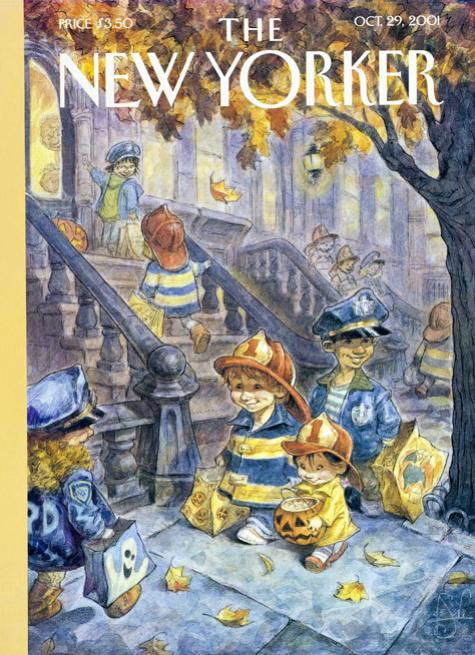Meaningful Adjacencies: Richard Barry Ross and Stacey Leigh Sanders

The nearly 3,000 names inscribed on the 9/11 Memorial are arranged in accordance with the victims’ relationships, the companies they worked for and where they were on 9/11.
Keeping the Museum Pristine Brings the Absence of 9/11 to the Fore

A visit to the 9/11 Memorial & Museum largely confronts the notion of absence. Save for dear memories, the victims are physically absent from their family and friends’ lives. The buildings of the World Trade Center are gone with damaged structural components scattered in memorials all over the world.
The amazing slurry wall “bathtub” remains, but it’s a space of invisible volume. Like a blank slate or primed canvas, the structural remains of the site allow the current “sculpture” to emerge: the 9/11 Memorial & Museum.
From the fountain voids to the inner chamber of the In Memoriam exhibition, we confront and stand in awe of the effect of absence.
The exhibition production team – working closely with the entire Museum staff – designs, coordinates, produces and implements exhibition projects into reality. Once they are produced and on display to the visitors, we maintain the exhibition’s condition. As the assistant director of exhibition production, I facilitate good design, keeping the condition of display cases, graphics and exhibit lighting like new.
Recently I was doing a walkthrough of the Museum to see the status of a few maintenance projects. The venetian plaster that we use in the In Memoriam exhibition is a beautiful and sensitive material that conveys the solemnity of the space as well as the designer’s respect for the victims and their loved ones.
After an extensive cleaning of the plaster, I walked through the space during public hours. I overheard visitors pointing out people they know in the portraits and it hit home the importance of good maintenance, particularly in that exhibition. The overall effect of the space is calm and serene. We make sure the little things like smudges and burned-out lights are attended to promptly so we can keep the attention on the portraits and cases.
Elsewhere we corrected lights on the original slurry wall. As I checked on the work, I noticed people on the overlook ramp really engaged with reading about and staring at the wall. Even on the ground in Foundation Hall I saw more people up against the rail than usual, talking about the wall. In a very different way this instilled in me that the standards we keep in maintaining the exhibits and spaces ensures that the story of the entire Memorial and Museum is clear and purposeful.
Although we hope that visitors take notice of the incredible exhibitions both permanent and temporary, appreciating the stories along with the enigmatic objects, the exhibitions production team also has a responsibility to become invisible. We are mindful that the conditions of the exhibitions do not detract from the visitors’ experience, and even our absence serves as a testament to honor those to whom we pay tribute.
By Randolph Black, Assistant Director of Exhibition Production, 9/11 Memorial & Museum

The nearly 3,000 names inscribed on the 9/11 Memorial are arranged in accordance with the victims’ relationships, the companies they worked for and where they were on 9/11.

In the months following the 9/11 attacks, feelings of gratitude and admiration for the tireless first responders were palpable across the country.